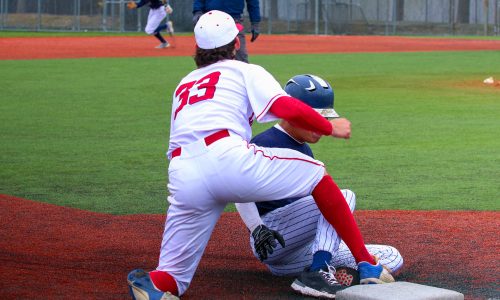Explaining All Different Types of Baseball Pitches in Brief
Baseball is an exciting and lively pastime for Americans. Talking about pitchers, do you know about the different types of baseball pitches?
While watching from the stands, it’s tough to differentiate between the pitches. Since balls move rapidly, you need to focus on their movement and speed. Moreover, it helps watch for an unexpected shift in direction, or a break in the pitch.
Baseball pitches usually fit into three primary categories: breaking balls, fastballs, and changeups. Let’s discuss different baseball pitches in this blog!
Different Baseball Pitches
Here’s what to know about various baseball pitches:
1. Cut Fastball
If you hold the ball a bit off center, it will get away from your arm side. Generally, it is a few mph slower than the four-seam fastball. This pitch is ideal for jamming hitters.
2. Four-Seam Fastball
It must have the optimal speed and the best command. The four-seam fastball is the most crucial pitch, as everything else gets rid of it with effort.
3. Two-Seam Fastball
It is also known as “sinker”. This fastball usually sinks, and it’s an amazing pitch for inducing ground balls.
4. Curveball
It is also known as a strikeout pitch. It dives down while getting to home plate. Sometimes the pitching velocity is effective like the motion, as it is generally slower than a fastball pitch.
5. Slider
It comes in between a curveball and a fastball. A slider is tougher than a curveball, with less downward movement. It features a tighter spin with a smaller break. Most often, you can discover a tiny dot in the baseball when a slider comes toward you.
6. Forkball
A forkball is thrown hard when you hold it in between the middle and index fingers at different intensities. Generally, it drops and tumbles violently, sometimes diagonally. It is called an out pitch, but it can be tough on the arm as well.
7. Split-Finger Fastball
This is completely an out pitch. While diving down at home plate, most often it gets missed swings.
8. Knuckleball
This pitch has less or no spin. It is tough to catch and control. Nobody knows what it will do generally, which makes it more difficult to hit.
9. Changeups
A changeup is slower than a fastball, but players can throw it with a similar arm movement. You must maintain proper arm speed to get the ultimate efficacy. Changeups help control bat speed.
Final Thoughts
Not all types of baseball pitches fit into primary categories. Baseball players have been enhancing their pitching styles by adding special flairs to their pitches. The knuckleball is an example. How precisely do all the players accomplish these various pitches? It depends on how a pitcher grips the ball.
A baseball player’s fingers’ position on the ball will impact the velocity and its spin direction. It decides the final pitching speed and motion, as well as if the pitch breaks. Did you throw a fastball before? How about other pitches in baseball? If you want to explore different pitching types with ease, you must use ProBatter’s professional-grade pitching machine. After all, a small difference in motion or speed can make a pitch more difficult to hit!



